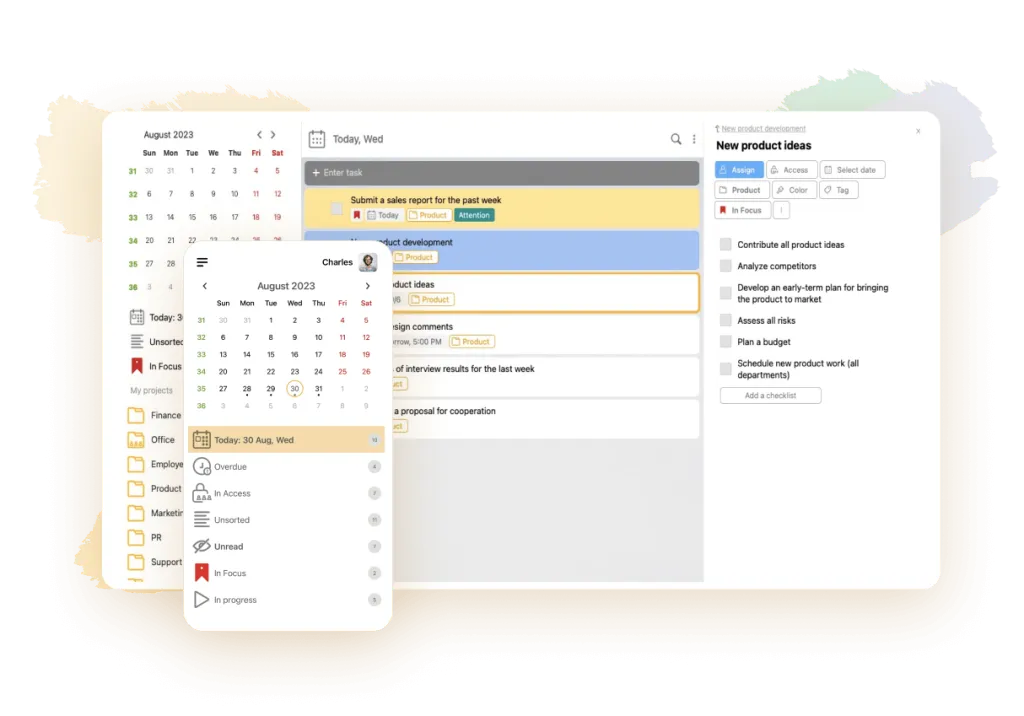
Ted Scott
January 10, 2024
By setting yourself the goal of doing a huge number of things in a short time, you are deliberately driving yourself into a dead end. After all, your current tasks will never end. Therefore, you should not strive to do as much as possible, but concentrate on important, global affairs. To succeed in work, in life, it is important to plan the right things. To consider business as a continuous process, in which each element is related to the other and has a certain value. We suggest using the Japanese Kaizen methodology for this purpose, which will help to get rid of fuss and put things in order. In our article, we will tell you what kaizen planning is. What results it produces and how to use this method in practice.
What is the meaning of the Kaizen technique

The Kaizen philosophy of business management emerged in Japan after World War II. Literally translated, the term means: “change for the better”. The essence of the concept is the constant modernization of business processes. To achieve success, all elements of a company’s business environment must be continuously improved and upgraded. Any optimization has a positive impact on overall performance. People work better, get satisfaction from the work process. Product quality improves. The company gets additional profit and achieves its goals faster.
Kaizen philosophy is applicable to all spheres of life. Many methods, techniques and planning tools have been developed on its basis. This approach is aimed not at achieving a certain result, but at getting pleasure from the very process of activity. Success is evaluated not by achievements, but by the desire to achieve them, the desire for continuous self-improvement. In this approach, each team member tries to fulfill his or her assigned role as best as possible. In this way, he/she contributes to the overall success of the team.
Principles and main elements of the Kaizen
The kaizen concept is based on the principle of lean production. That is, elimination of processes and actions that lead to losses, optimization of the work of each department and employee, and customer orientation.
Kaizen philosophy is based on the cyclical nature of actions. They are constantly repeated in a closed cycle, contributing to the development of the company. Cyclicality is based on two key principles:
-
PDCA (Plan-Do-Check-Act). Changes are first planned, then they are put into practice. After the results are verified, the process is adjusted accordingly. The cycle is then repeated.
-
SDCA (Standardize-Do-Check-Act). Standards are developed. They are implemented in production and tested. Work processes are then adjusted based on the results of the inspection. In this way, management efficiency is improved and the process of implementing standards in the company is simplified.

The core elements of Kaizen include:
-
Self-discipline. Employees independently plan and allocate their working time, control the quality of work, and meet deadlines for accomplishing assigned tasks.
-
Morale. It is the employer’s responsibility to motivate employees to ensure quality and efficient work for results. Performers are incentivized to work better by providing them with comfortable working conditions, paying bonuses and other rewards.
-
Teamwork. All employees of the company work for a common result. Therefore, the company encourages their training, professional development, creation of brainstorming groups and mutual learning, including during working hours.
-
Continuity of changes with refusal from formal regulations, if they do not help to solve the set tasks or hinder development.
-
Openness. All working issues are discussed via video link, in a public format. Brainstorms are organized to discuss problematic issues. The company’s problems are not hidden from the client, so they are solved more efficiently and faster. IT companies practicing kaizen philosophy use open space offices, part of which is allocated for co-working. Employees can work in a place that is convenient for them.
In kaizen philosophy, the correct arrangement of workplaces is important. A special 5S methodology is used to optimize them.
| Seiri | Sorting | It is necessary to sort out all items present in the workplace. Items not in use are labeled and removed from the desk. |
|---|---|---|
| Seiton | Systematization | The remaining items and tools should be kept strictly in their designated places. For this purpose, kaizen planning provides for arrangement schemes. |
| Seiso | Maintaining cleanliness | The workplace must be perfectly clean. It must be tidied up after work is finished. |
| Seiketsu | Standardisation | The above actions should become a mandatory system. Special trainings may be held to reinforce useful skills. |
| Shitsuke | Improvement | These principles are a mandatory rule for all employees. They should be further improved and developed. |
The Japanese concept implies active participation of employees in production management processes. They can contribute their ideas to an improvised “bank”. Management scrutinizes and considers each of them, even if, at first glance, the employees’ suggestions seem unrealistic or strange.
How Kaizen Planning Happens
Kaizen planning is performed using Kanban methodology. This methodology provides absolute transparency of work processes with visualization of tasks on a common board. Each team member can take his individual task from it, visually seeing what actions are performed by his teammates. As tasks are executed, they are moved to the corresponding columns. Therefore, the manager and executors can see which tasks have been completed or are in progress.
Kaizen planning takes place in several stages:
-
All tasks are recorded in writing. Each thought is recorded on a separate card. Initially they resemble a continuous flow, but then they are sorted according to the importance of completion.
-
A personal or team mission is formulated. To do this, you need to answer a few questions honestly:
-
Who are we?
-
What do we want?
-
How do we see the company in the future?
-
What will we leave behind?
The Japanese use the “Ikigai” technique to define a mission to help achieve work-life balance.
Example of a personal mission statement: “I want to live a happy, secure life with benefits for society and the environment.”
-
The cards are sorted by category.
-
After filtering and sorting the tasks, deadlines are set for each of them. Three columns are allocated on the kanban board for this purpose: “To be done”, “Done”, “Planned”.
-
Next, a separate board is created for the coming month, including sections:
-
“Needs to be fulfilled.”
-
“Scheduled.”
-
In the works, at another performer;
-
In the works, at my place;
-
Today;
-
Completed.
Global strategic plans are written on special “annual” boards. Once all tasks are completed, the boards are removed or renamed for future use.
Kaizen planning in LeaderTask

The first step to mastering the Kaizen methodology is to master planning skills. To structure and organize all work processes in the team according to the Kanban system, you can use an ordinary whiteboard in the office or use the modern LeaderTask service.
In the application you can make lists of tasks, categorize or prioritize them using color labels, set due dates for each task. Assign statuses to them, move them in columns. Automate routine repetitive tasks. The program will move them to the required date, send a notification about the execution time. The program functionality includes a set of time management tools for proper organization of work processes.
In LeaderTask you can also organize brainstorming sessions with colleagues to quickly solve any project issues. Organize feedback between management and executives. You can share the results of work with other employees, distribute responsibilities between employees, track the progress of assigned tasks. See a full picture of your work, personal affairs on a virtual whiteboard or calendar. The service works on all digital platforms, including without internet.
Implementing kaizen philosophy in the activities of any company is a labor-intensive process that requires a large-scale restructuring of employees’ thinking at all levels. Therefore, it is better to approach the system in small steps, constantly asking yourself the question: how to make the company better. The most important element of kaizen practice is the thoughts and ideas of employees. Performers working in secondary roles are more likely to notice small, insignificant details that are not obvious from the managerial seats.
The application of kaizen planning ensures the formation of a culture of continuous improvement at all levels of the company. Personnel motivated for development and self-improvement will strive to perform their duties efficiently and effectively. This will lead to increased profitability and prosperity of the company.








